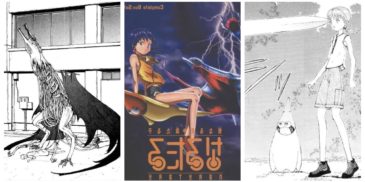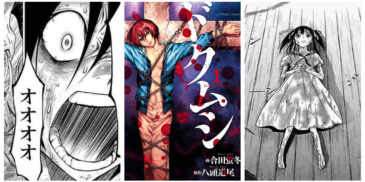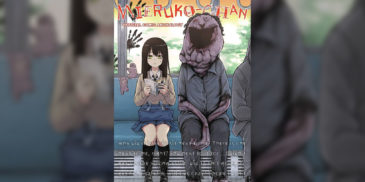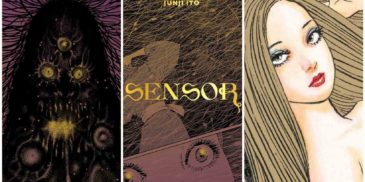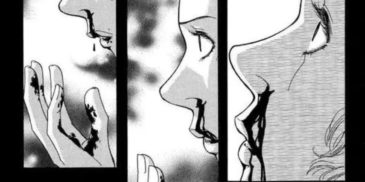
At the tender age of four, Kanako Inuki was handed a shiny new five-yen coin. Promising the same allowance each month, her mother took her to a bookstore and let her choose a manga magazine. Inuki considered a series by Masako Watanabe, but the pull of Kazuo Umezz proved impossible to resist. Despite scaring easily, Inuki found herself drawn to horror, loving ghost stories, and scary movies. In addition to Umezz’s comics, Inuki was captivated by Moto Hagio’s seminal shōjo series The Poe Clan (1972-76) and Osamu Tezuka’s Phoenix (1954-1988). Her aspiration to be a manga artist waned somewhat when she left school, but she began drawing again as a hobby. She finally debuted in 1987, when her story Orusuban was selected by Kazuo Umezz himself for publication.
Last year, Kodansha USA released the English edition of Be Very Afraid of Kanako Inuki!, which collects six of the mangaka’s stories. Translated by Kevin Gifford, the book reintroduces Inuki’s work to English-speaking manga fans. Previously, Dark Horse released School Zone in 2006, and CMX (the now-defunct DC Comics imprint) released Presents the following year. Both three-volume series are now out of print, making this the easiest way to experience Inuki’s work. Until fairly recently, the English-speaking horror manga scene had been dominated by Junji Itō; Be Very Afraid of Kanako Inuki! takes another step towards rectifying that.
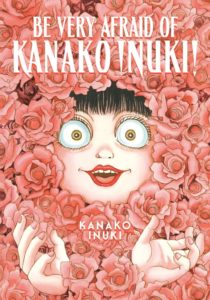
Kodansha’s release selects one story from six of Inuki’s series: ‘The Birthday Present’ from Presents; ‘Lolita’ from Bukita-kun; ‘The Sasori Doll’ from Big Sis Sasori; ‘Lovesickness’ from The Haunted Examination Room; ‘Happiness Hidden in the Dark’ from Fulfilled Wishes; and ‘Friends at the Smiling Gate’ from The Mysterious Tatari-chan. These are standalone stories but, read independently of their respective series, context is of course lacking. While the stories are varied, the themes are consistent. Like Umezz, Inuki explores childhood fears and trauma, and she is not afraid to laugh in the face of them. At times, the work is outright pastiche. Events are exaggerated to absurd degrees, and familiar tropes and twists (one lifted directly from an episode of The Twilight Zone) reveal a deep understanding of and love of the genre.
This understanding informs Inuki’s characters. She knows that women and girls can be just as vicious as men, if not more. While men and boys’ implied and explicit ill intentions colour many of the stories, it is the girls’ brutality that shapes and defines Inuki’s brand of horror. Inuki’s girls revel in frills and patterned dresses as much as they delight in cruelty. They force us to redefine ‘cute’; affixed to China-doll faces are bulging amphibious eyes and leering grins. ‘The Sasori Doll’ (which Inuki calls a “tale of sisterly love”) concerns the titular Big Sis Sasori tormenting her younger sister. ‘Friends at the Smiling Gate’ and ‘The Birthday Present’ explore the impact and possible consequences of girl-on-girl bullying.
Perhaps most thematically and aesthetically distinct is ‘Happiness Hidden in the Dark’. A dark fairy-tale of sorts, it follows a blind princess who wishes for sight. Inuki builds her world beautifully: kind hands emerge from the darkness; unknown sounds burst around her; and the ornate palace forms as she explores. Despite the familiar twist, the story is powerfully resonant. Meanwhile, the Bukita-kun story ‘Lolita’ features an abused, precocious five-year-old pursuing romantic relationships with teenage boys. Bukita-kun does not reject her advances, finding a way to age her body, but not her mind. The story veers wildly into supernatural territory, and away from too nasty an implication about Bukita-kun (who, it is not mentioned, is actually a zombie). Predatory men are represented by Dr Kanawa in ‘Lovesickness’, whose character file twice mentions an interest in “young girls”.
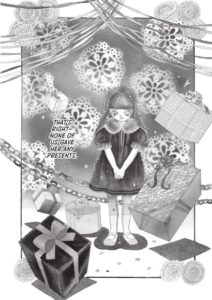
Replete with a character index, author’s notes, an interview from 1997, and a strikingly gorgeous, tactile cover, Be Very Afraid of Kanako Inuki! is a beautifully presented release. Inuki’s darkly comic and often parodic horror stories explore aging, bullying, and childhood trauma, leaving room for shocking and inventive moments of supernatural body horror. Currently, the easiest and cheapest way for English-speaking manga fans to experience Inuki’s work, the book would make a fine addition to any horror fan’s collection. In the Western World, Junji Itō still holds many in his thrall, but other male mangaka (like Umezz and Hideshi Hino) are joining him. It is, therefore, promising that Inuki’s work has received such fine treatment from Kodansha.
Be Very Afraid of Kanako Inuki! is available now from Kodansha USA.
More Manga Reviews
When you think about Pokemon and Digimon, there are probably 2 things that come to your mind: the power of friendship and absolutely cute magical critters. It does not matter… There is something about bad media that can be extremely attractive in some cases. Why The Room is still revered while The Exorcist II is panned? This fine line between… Mieruko-chan Anthology Comic is a 2023 compendium of short, one-shot manga based around the characters of Tomoki Izumi’s popular supernatural manga/anime Mieruko-chan. The anthology features work from Yousuke Katayama, Shuu… Junji Itō is easily the most prolific horror mangaka in English translation. Viz Media has made a concerted effort to bring as much of his work to the west as… Reading Club is advertised as the first Korean horror comic for girls. That line alone enticed me enough to pick it up over a decade ago from Udon Entertainment. Many… Every now and then, when I’m browsing for new media to enter my brain hole, I come across a title that has managed to capture my interest by just viewing…Narutaru (1998) Manga Review: The Kids Are Not Alright
Dokumushi (2013) Manga Review- A Rare Case of Charming Mediocrity
Mieruko-chan Anthology Comic (2023) Manga Review – An Official Collection of One-Shots
Sensor (2019) Manga Review – Junji Ito’s Take On Cosmic Horror
Reading Club- Vol. 1 Manhwa Review – Be Careful What You Read
Soul Liquid Chambers Manga Review – A Kaleidoscope of Colour and Violence
Isabelle is a writer from the UK who enjoys alternative manga and horror films. When not writing, you can probably find Isabelle buying books or obsessing over Martin and Lewis.

